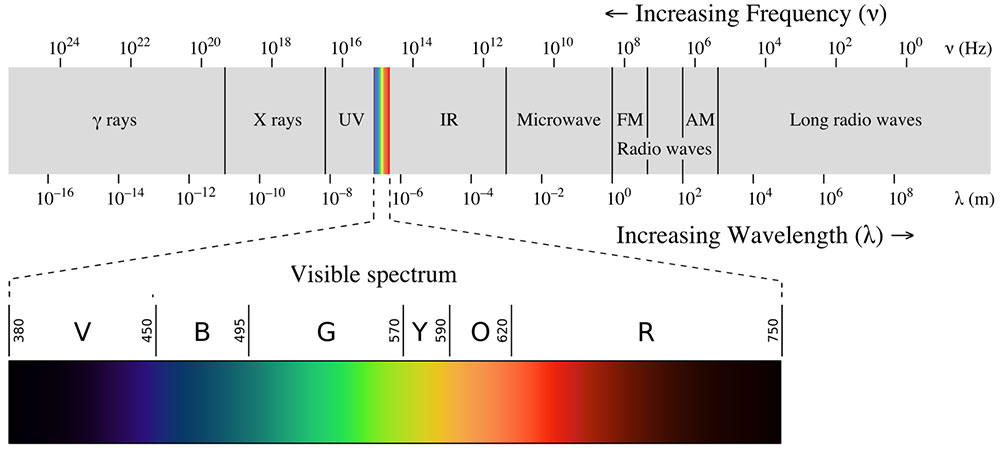Gamma ray is a type of electromagnetic radiation. It stands for all the radiation in the shortest end in wavelength (the highest end in energy), so the word “gamma ray” indicates the wavelength range of more than 6 orders of magnitude.

Electron Volt (eV) is a unit of energy, and a few eV corresponds to optical light while a few thousands eV corresponds to X-rays. The radiation from X-rays to gamma rays of about 1 billion eV traveling from the Universe to the Earth will not reach the ground due to the interaction with the atmosphere. Therefore, observations with satellites are required to detect the gamma rays before the interactions.

The history of gamma-ray astronomy is not old. For example, in 1970’s phenomena called gamma-ray bursts were discovered by the military satellite Vela, but it had been unclear which type of object emits the gamma rays. In 1990’s, astronomy with gamma-rays started with the CGRO satellite. The BATSE detector onboard the CGRO satellite revealed that the gamma-ray bursts are distributed uniformly in the whole sky, which strongly suggests that they are astronomical objects sitting much far from our Galaxy. The satellite was also equipped with the EGRET detector that can investigate the gamma rays with energy higher than 100 million eV. This detector found more than 200 gamma-ray emitters, out of which more than a half were unknown objects. It became clear that multi-wavelength astronomy is needed to search for the origin of these objects.

Gamma rays with energies higher than 10 billion eV will interact with the atmosphere with a big avalanche phenomenon, which can be seen even from the ground. The avalanche of electrons and positrons made of the gamma rays is called “air-shower”, and it emits also a radiation called Cherenkov light to the forward direction. The light is detected by a telescope on the ground, socalled “atmospheric Cherenkov telescopes”. This detection technique is relatively new, as it became active in 1990’s after the results by the CGRO satellite, which turned out to be a success only in 2000’s.
The currently operational atmospheric Cherenkov telescopes are, for example, H.E.S.S. in Namibia, VERITAS in US, and MAGIC in Spain, and the members of this group are active in the collaboration of MAGIC telescopes. One of the biggest results by MAGIC is the discovery of a gamma-ray burst with gamma-rays with energy up to a thousand billion (trillion) eV. Gamma-ray bursts are known to be related to a death of a massive star, thanks to the researches for more than a half century since the discovery. However, the basic information of the object is not yet known, such as which mechanism is responsible for its gamma-ray emission and where the particles are accelerated, and so on.

MAGIC telescopes observed a gamma-ray burst that happened in Jan 2019 since the beginning of the burst, and found for the first time from this type of object the gamma-ray emission of energy of a trillion eV. This result revealed that the mechanism of the gamma-ray emission is two-fold, the first being the Synchrotron emission by the accelerated electrons while the second being Inverse Compton scattering where the light obtains its energy from the accelerated electrons (Here one of the members of this group, Dr. Noda, contributed a lot). Since this discovery, detections of gamma-ray bursts by atmospheric Cherenkov telescopes have been reported. The atmospheric Cherenkov telescopes are surely expected to contribute significantly to understanding this type of object.
“Multi-messenger astronomy”
MAGIC telescopes also contributed to the IceCube event 170922A that was the beginning of the multi-messenger astronomy. Simultaneously with the neutrino detection and optical flares of the blazar, the MAGIC telescopes detect the flare in the gamma-ray energy of a few hundreds of billion eV. On the other hand, such blazars alone cannot explain all the neutrinos detected by the ICeCube experiment. We do not know yet which type of astronomical object emits the major fraction of the neutrinos arriving at the Earth. In this group, we are using IceCube, MAGIC, and the next generation atmospheric Cherenkov telescope, CTA LST, and aiming at deepening the understanding of the origin of neutrinos by gamma rays and X-rays. In particular a type called low-luminosity gamma-ray bursts is known as one of the candidates of neutrino sources, and it is expected that one can detect both neutrinos and gamma rays / X-rays from the same sources.

In 2010’s, the researchers working for the currently operational atmospheric Cherenkov telescopes started to design the bigger, next generation telescope project, Cherenkov Telescope Array (CTA). In 2017, the first year of multi-messenger astronomy, the first Large Size Telescope (LST) of CTA was under construction. It was completed in 2018, and is operational as of 2023. The rest, 3 more LSTs will be built by 2025, and we are planning to start the observation with the 4 telescopes from 2026. The understanding of the Universe with multi-messengers is one of the most important subjects in CTA and IceCube (Gen2) projects. This group is working hard to maximize the effect of the synergy between LST and IceCube.